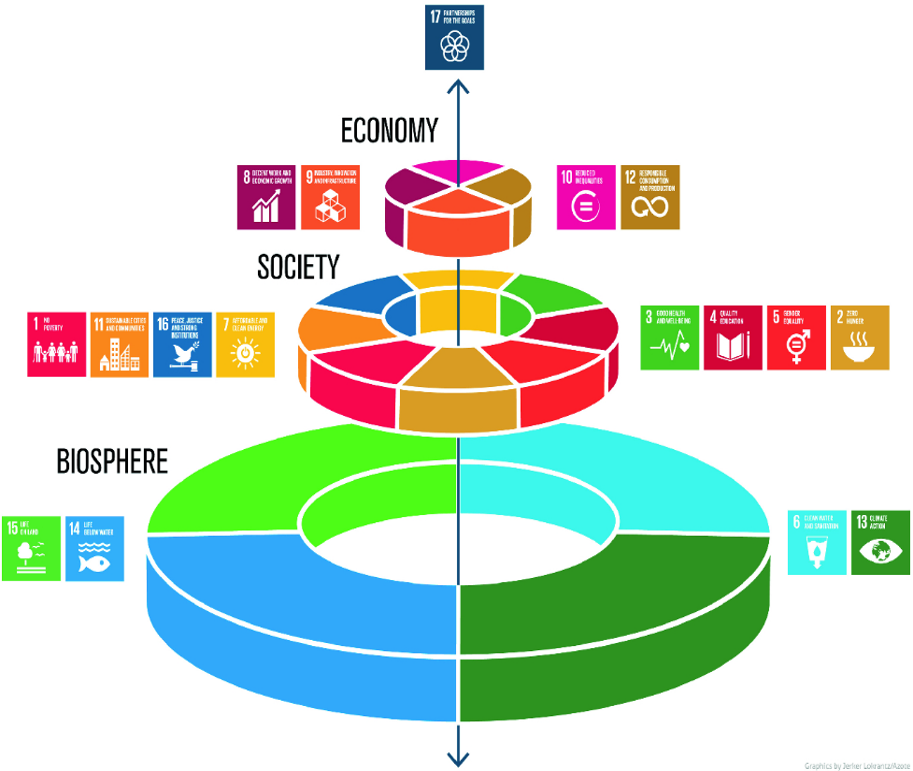How to Map Multiple Modules
You can use this Advanced Evaluation Tool to examine the extent to which SDGs are covered within a Course or Group of Modules.
Directions
NB If only six modules appear below for entering values, hold CTRL and zoom out with your mouse until all nine modules appear.
A - Look through the list of SDGs in the table below and pick the SDG that most aligns with each module in your group. You can click on any SDG to launch a detailed description in your browser.
B - enter a score between 0 and 5 in the "Module (0-5)" column of the "Map Your Course" table below where:
| Value | Description |
|---|---|
| 0 | No Coverage |
| 1 | Indirectly or unknowingly including topics related to the SDG |
| 2 | Provides insights into the SDG from the perspective of One's Own Discipline |
| 3 | Uses inter or transdisciplinary approach to address at least one SDG target |
| 4 | Assessment of SDG knowledge in relation to module and/or programme learning outcomes |
| 5 | Uses Action Oriented Pedagogies related to the SDGs and/or Community Outreach |
C - If any other SDGs receive a secondary or less focused attention in your module, then score as in Step B
D - Enter scores for SDGs that recieve minimal treatment or no coverage at all
E - Then repeat steps 1-4 for remaining modules in your sequence.
F - Examine your graph below
G - Lastly, answer questions in the reflection box
To start populating the graph press enter on any of the values you have scored between 0 and 5. You can enter values for up to nine modules. When you have completed six modules click on the green arrow beside the SDG goal to enter values for modules seven to nine. Do not close the arrow again as that will set the values back to 0.
You can print or save your results as a PDF. Right Click anywhere on the page and click Print. In the top right where Destination is displayed you can select a printer or Save as PDF.
Map your Course
| Individual SDGs (click link for more info 2) | SDG Pillar | Module 1 (0-5) | Module 2 (0-5) | Module 3 (0-5) | Module 4 (0-5) | Module 5 (0-5) | Module 6 | Module 7 | Module 8 | Module 9 |
|---|---|---|---|---|---|---|---|---|---|---|
| 1: No Poverty | Social | |||||||||
| 2: Zero Hunger | Social | |||||||||
| 3: Good Health and Well-being | Social | |||||||||
| 4: Quality Education | Social | |||||||||
| 5: Gender Equality | Social | |||||||||
| 6: Clean Water and Sanitation | Environment | |||||||||
| 7: Affordable and Clean Energy | Social | |||||||||
| 8: Decent Work and Economic Growth | Economy | |||||||||
| 9: Industry, Innovation and Infrastructure | Economy | |||||||||
| 10: Reduced Inequality | Economy | |||||||||
| 11: Sustainable Cities and Communities | Social | |||||||||
| 12: Responsible Consumption and Production | Economy | |||||||||
| 13: Climate Action | Environment | |||||||||
| 14: Life Below Water | Environment | |||||||||
| 15: Life on Land | Environment | |||||||||
| 16: Peace & Justice Strong Institutions | Social | |||||||||
| 17: Partnerships to Achieve SDGs | Social |
Reflection on the Tool
| Reflection on the Tool | |
|---|---|
| 1 | Compare patterns correlated to each module and then as a cumulative or mosaic image? Are modules focused on few or many SDGs? Do these patterns reveal interlinkages between modules? |
| 2 | If comparing a course of modules, is there a complimentary nature to the patterns which increases overall coverage of the SDGs? Is there a way to increase coverage of SDGs and/or the 3 SDG pillars of Economy, Society and Environment (Biosphere)? |
| 3 | If this is a course, do introductory modules provide sound foundation of SDGs to be covered through the entire course? Does the collective mosaic pattern reflect vertical integration of SDGs along a course of study? How might vertical integration of SDGs be enhanced? |
| 4 | Do the final or concluding modules in the course provide space for student reflection on the various SDGs covered during the programme in the form of discussion, assignment or formal assessment? A capstone project or assessment related to those SDGs? |

The figure above is often called the wedding cake image of the SDGs. It represents the Environment or Biosphere being the foundation of our society and our natural capital through ecosystem services. The next layer is Social and is unitifed by the premise of leaving nobody behind and everyone having dignity and equal opportunity. The Economic layer is driven by inclusive growth within safe operating parameters. The pinnacle expresses the partnerships needed to advance the SDG targets weather between private and public sectors or the global north and south.


